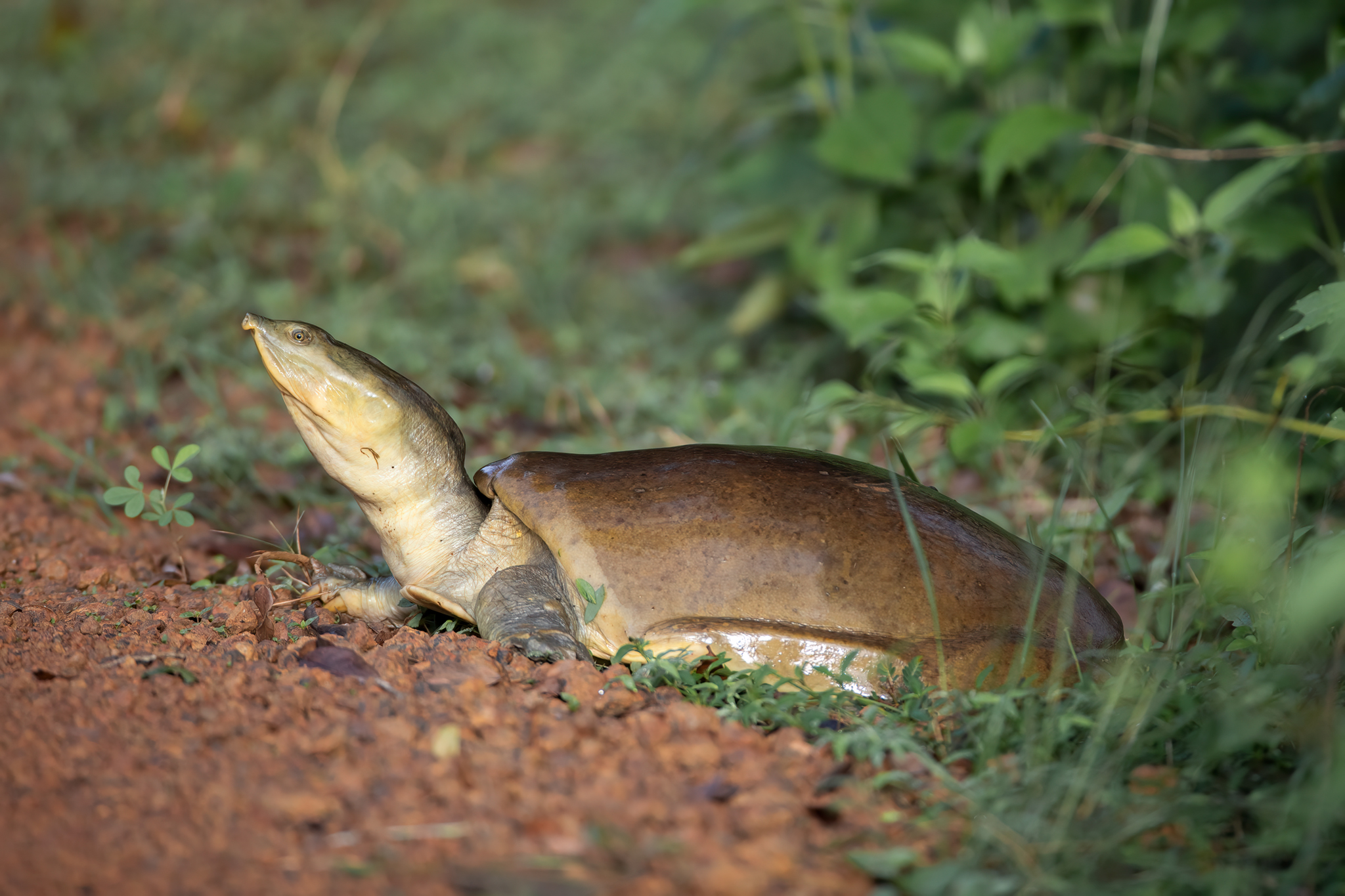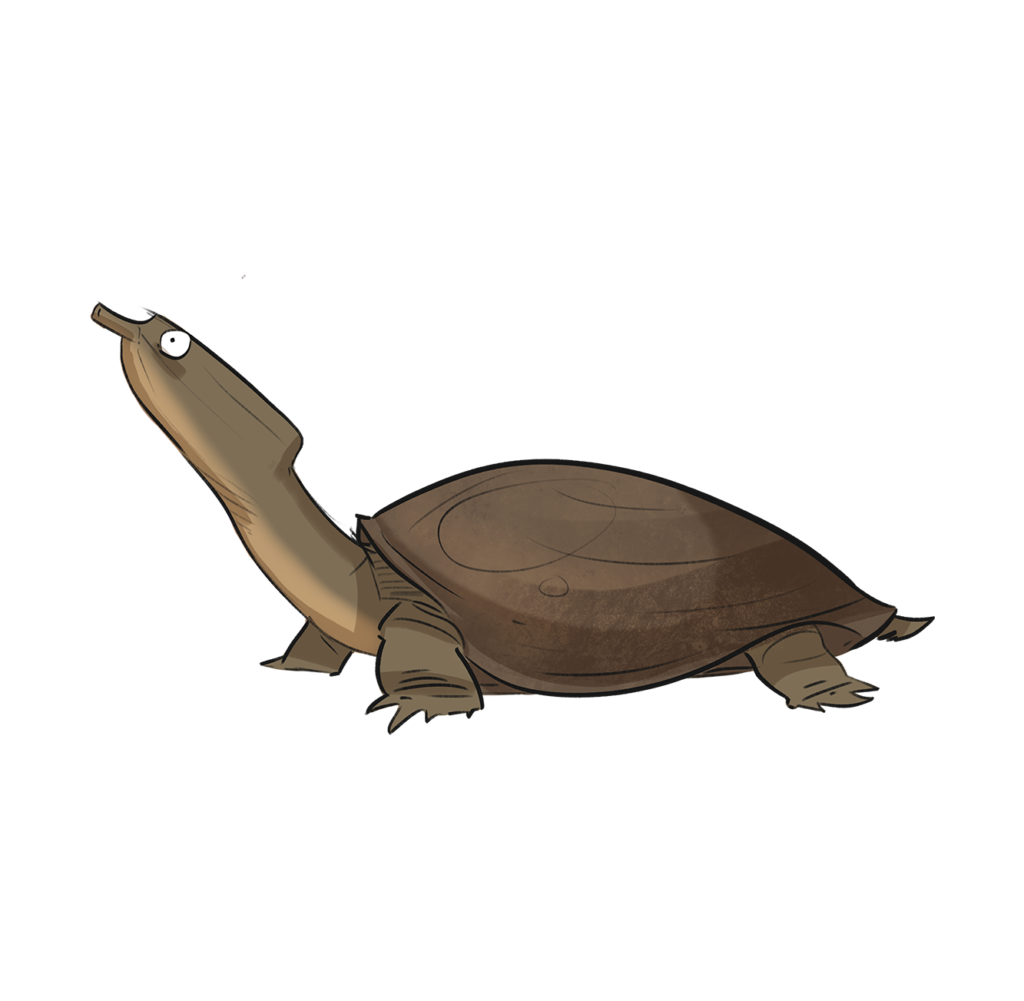

The Indian flapshell turtle (Lissemys punctata) gets its name from the femoral flaps on its underside, which cover its limbs when the turtle retracts into its shell. The carapace (shell) of this species changes shape with age: juveniles have a more circular shell, while adults possess a more ovular shape. The turtle’s nose is short and stout, with a nasal septum that lacks a lateral ridge.
Omnivorous by nature, this turtle has a varied diet that includes frogs, fish, shrimp, snails, aquatic vegetation, grasses, and fruits. This species tends to burrow and prefers water with muddy or sandy bottoms, commonly found in shallow lakes, rivers, and stagnant bodies of water. Nesting typically occurs in swampy areas with good sunlight exposure, where the eggs are buried for protection. A clutch of 2 to 16 eggs is usually laid, with larger females tending to deposit more eggs.